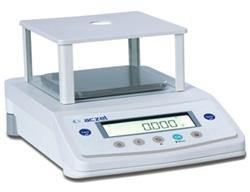A precision laboratory balance is used to measure the weight of objects in a given force, pressure, or time. Many laboratory balances are calibrated with micrometer screws that can be adjusted to match specific forces and dimensions. These are often found in fluid mechanics laboratories to measure the amount of water or liquid in a given tank. They also make it easy for experiments involving heating liquids and gases.
From providing accurate precision to even small digits to getting better results in your science projects, there are so many positives you can achieve with a precision balance. Some of the key features of good quality precision balances are detailed here.
Accuracy
As the title suggests, good quality Precision Balances should get the results to the required precision. Most precision balances offer a resolution of 0.01 grams, which is good enough for most experiments. This way, you can get accurate results fast, and you do not have to go through the trouble of making adjustments to your weight.
Fast Readings
Besides being accurate, a good quality precision balance should also have fast readings so that you can take your measurement as quickly as possible and proceed with your experiment. It should achieve its maximum reading speed within a couple of seconds after zeroing in on an object’s weight.
Micrometer Screw Adjustment Capability
A precision laboratory balance must make micrometer screw adjustments to match the desired force or pressure applied to the object. That way, you can use your laboratory balance for a wide range of experiments. It is recommended that you use it with objects less than 2000 grams so that you do not require a higher measurement range or accuracy. Computer-controlled balances weigh an object within mere seconds and can even provide visuals to show if the force or pressure applied is within the requirements needed or not.
Sturdy Construction
Since precision balances get used in laboratories, they need to stand up against bumps and accidental drops, which means they have to be well constructed so that such actions do not easily damage them. As a result, good quality balances will have a sturdy construction and be durable enough to withstand your weight and pressure.
Large Weights Sizes
Most Precision Balances have a range of weights from 250 grams to at least 2000 grams. This ensures that you can use it for different experiments and also help minimize the possibility of another person using your balance.
Visible Display Unit
A good precision balance should have a visible display unit to take accurate readings and understand how much force or pressure is being applied to the object being weighed in the laboratory. Some scales can even display values in LCD or LED displays to be easy to read, especially in bright environments like labs and classrooms.
Why Use Only Precision Balances In Science Labs?
Precision balances can be used in science labs by students, teachers, and researchers. They are used for measuring the mass of small amounts and weighing heavy and oversized objects. The main reason why these balances are preferred is that they are accurate enough to provide reliable measurements that anyone can rely on. In addition, precision balances are designed to be controlled by human hands, so they are user-friendly and straightforward to use.
- Precise and accurate measurements.
- They are straightforward to use.
- Zeroing in on the weight of an object is easy with these balances.
- They are user-friendly and easy to operate.
- Makes it easy for students to analyze.
There are many different types of precision laboratory scales available today for research Global Lab Supply – from scales with low capacities best-suited for lab work to ones that can weigh as much as thousands of pounds with a high degree of accuracy.
Why Should Scale Balance Be Precise?
In general, if you are a mass-media audience, you will have seen many different types of scales. A bathroom scale is already an example of this effect. Please do not confuse these with scientific scales because they do not meet the basic needs required in science. Furthermore, most people have never thought about what should be considered on a scale. But thinking deeply about this will bring beneficial results.
Firstly, the precision of a balance is determined by the divisions on its display and measuring system. The more divisions that exist on it, the more precise it can be. But usually, for most balances for use at home or as reference instruments for students to weigh simple things, there are no markings or divisions on them at all.

